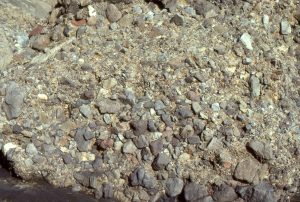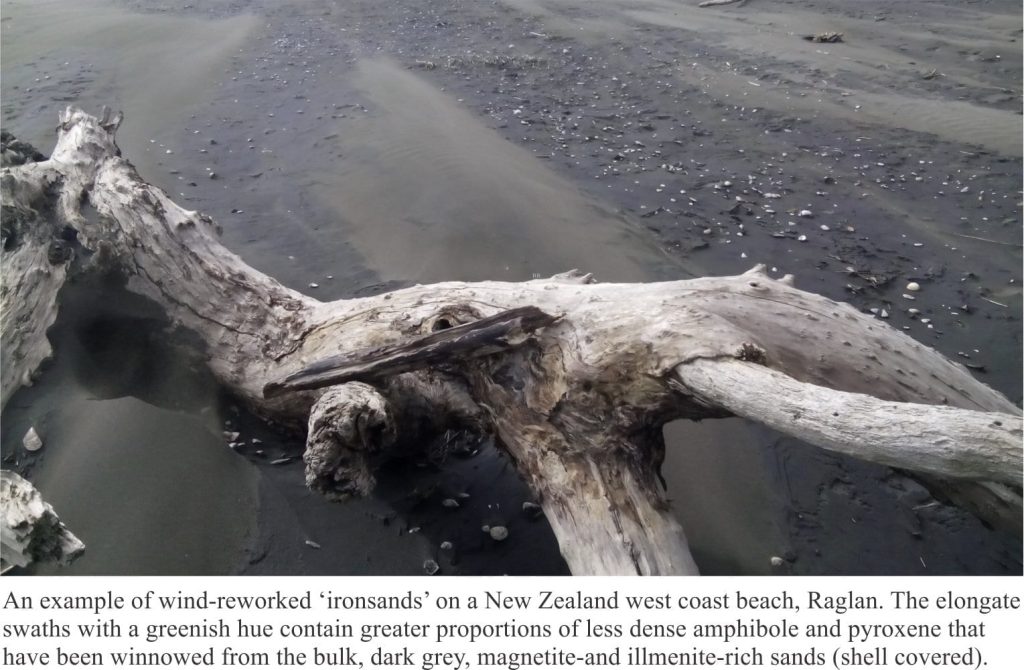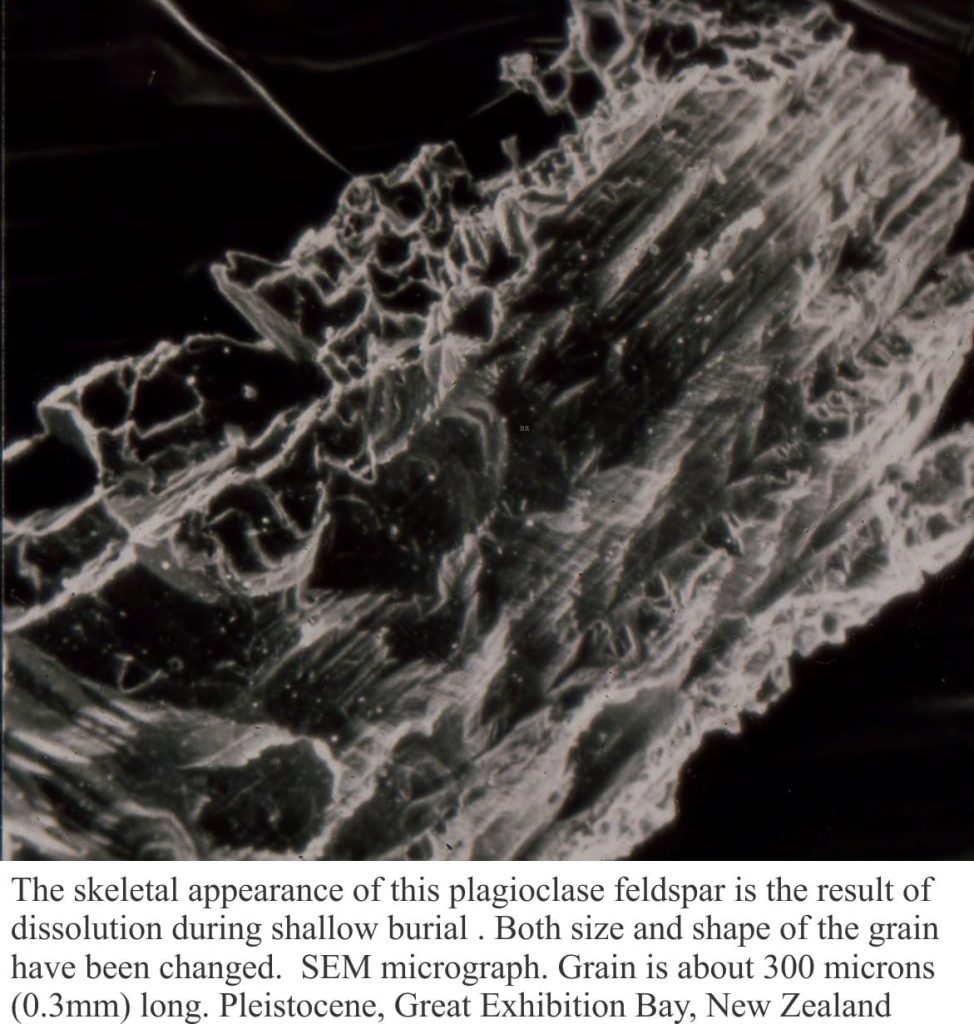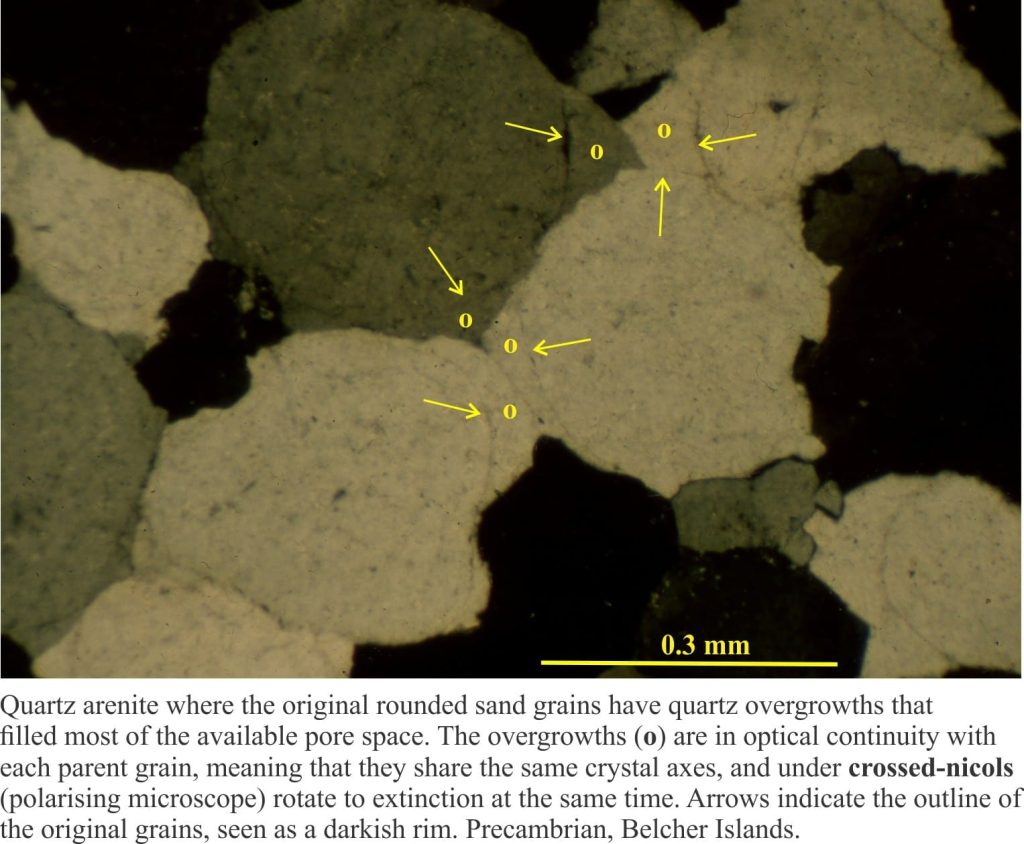This post is part of the How To… series
What processes determine the size distribution of clasts in clastic sediments? Why is it that dune sands tend to be very well sorted, river deposits less so, and at the other end of the spectrum, turbidites on a submarine fan are left with no sorting at all? In this article we will look briefly at three determinants of grain size distributions: inheritance, depositional hydraulics, and post-depositional changes. The three determinants are discussed in greater detail by R.L. Folk under the heading Textural Maturity (a PDF of the 1980 issue can be downloaded here)
Inheritance
All those grains of sand, pebbles and cobbles come from somewhere, from other sediments or source rocks. Erosion and weathering of rock generally results in a wide range of clast sizes – from large blocks to silt and finer. During sediment transport, particularly in fluvial, alluvial and high energy coastal systems, the larger fragments are whittled to smaller fragments. However, there are situations where the source contains a limited range of clast sizes which means that sediment sourced from these deposits will also have similar grain size limitations. The example of modern beach and dunes sands illustrated in the previous post is a case in point. The siliciclastic component of the modern sands is derived from consolidated and weakly lithified Pleistocene deposits that have similar, if not identical grain size distributions. The grain size characteristics of the modern sands are inherited from the older deposits.
Hydraulics
Environments of deposition are strong determinants of grain size and grain size distributions in clastic sediments. The primary control here is hydraulics – the strength and longevity of water-wind currents and waves acting on a sediment bed. The strength of a flowing medium determines the size of clasts being moved; in general the stronger the flow, the coarser or heavier the clasts that will be transported (note that size here depends on mass and density).
However, the strength of the flowing medium alone is not the only determinant; the longevity and/or repetition of flow is also critical. For example, turbidity currents and debris flows are basically single depositional events. For contrast, compare sediments in river channels where flow is continuous (albeit fluctuating). Sediment movement along the length of a river commonly produces a down-stream increase in finer sediment fractions, where much of the coarser material (especially gravel) remains upstream. Wave washing along coasts results in repetitive sediment movement, such that grains may travel many kilometres in the swash and backwash and yet never leave the beach. In both these examples the potential for episodic sediment movement is high. We refer to this process as reworking.
There is a direct correlation between sediment sorting and the degree of reworking; well sorted sands have generally been subjected to high degrees of reworking (notwithstanding the possibility of inheritance). For any given flow velocity there is a maximum grain size that can be moved across a sediment surface; smaller or lighter grains will move across the bed (or in suspension), coarser or heavier grains will not move. Thus, sediment is sorted according to size and mass; lighter or smaller grains are separated or winnowed from coarser-heavier grains. The more frequently this process occurs, the greater the degree of grain sorting.
Movement of sediment also results in mechanical wear and tear of clasts (abrasion). Prolonged abrasion during reworking will ultimately reduce the size of clasts. This process depends primarily on the mechanical strength of clasts. Quartz and feldspar (the two most common components of terrigenous clastic rocks and sediments) react differently during prolonged reworking; quartz is mechanically stable and although grain sizes may become smaller over time, grains survive several cycles of deposition and reworking. Feldspars on the other hand tend to break along crystal cleavage planes. Thus, a sediment that that originally contains equal amounts of quartz and feldspar can, following prolonged reworking, become a well sorted quartz sand with little or no feldspar.
Post-depositional changes
Diagenetic changes that specifically effect the size distribution of grain populations can involve either dissolution (size reduction) or precipitation (enlargement) of the more common rock-forming minerals such as quartz, feldspar and carbonate.
Pleistocene shallow marine deposits in northernmost New Zealand contain bivalve moulds and casts but no calcium carbonate. Post-depositional leaching of the original coarse carbonate size fraction has created deposits that now are as well-sorted as the associated ancient dune deposits.
Calcium carbonate is not the only mineral component affected by leaching in these Pleistocene deposits; feldspar grains too show a remarkable degree of dissolution, resulting in size reduction and even complete removal. Thus, diagenetic changes have skewed the overall grain size distribution towards that of the surviving quartz grain population.
Grain size enlargement also occurs in more lithified deposits. This commonly takes the form of crystal overgrowths on quartz and feldspar grains. Mineral overgrowth not only changes the size of clasts, but also their textural properties such as shape and angularity. Care needs to be taken when observing disaggregated sands to distinguish these post-depositional changes from original depositional textural attributes. The most reliable way to do this is using thin-sections and a polarizing microscope.
Some other useful links
Describing sedimentary rocks; some basics
Analysis of sediment grain size distributions
The hydraulics of sedimentation: Flow Regime





















